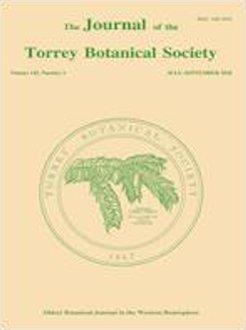Nonindustrial private forest (NIPF) landowners own a substantial amount of acreage within the southern USA. The NIPF landowners are usually less financially motivated and implement relatively less-intensive management options, such as partial harvesting, to pursue a variety of multiuse objectives. Understanding how developmental processes are influenced by partial harvesting is vital to constructing viable silvicultural prescriptions. Liquidambar styraciflua L., Quercus alba L., and Ostrya virginia (Mill.) K. Koch seedling (10–105 cm tall) growth and physiology were investigated in relation to different gap sizes and within-gap positions in a mixed Pinus L.–hardwood forest. The levels of photosynthetically active radiation that penetrated the overstory conditions allowed shade-intolerant Liquidambar styraciflua to produce greater (mean ± SE) monthly height and groundline diameter growth (12 ± 0.94 cm and 0.2 ± 0.02 cm, respectively) than Ostrya virginia (8 ± 0.87 cm and 0.1 ± 0.02 cm, respectively) and Quercus alba (4 ± 0.51 cm and 0.1 ± 0.01 cm, respectively), which was facilitated, in part, by significantly higher photosynthetic rates (P < 0.01). Solely manipulating the overstory conditions within mature, Pinus-hardwood mixtures may not be adequate for Quercus regeneration in those mixtures and is conducive to Liquidambar styraciflua obtaining a more-dominant canopy position in the future.
BioOne.org will be down briefly for maintenance on 17 December 2024 between 18:00-22:00 Pacific Time US. We apologize for any inconvenience.
How to translate text using browser tools
10 August 2018
Partial harvesting effects on seedling growth and physiology of three hardwood species in mature pine ( Pinus spp., Pinaceae)-hardwood mixtures1
Alexander Hoffman,
Mohammad Bataineh
ACCESS THE FULL ARTICLE
Bottomland hardwood
coastal plain
desired conditions
loblolly shortleaf
oak-pine
structural diversity





